Etsy and the B Corp IPO: Sustainability Meets Wall Street


By Peri Schweiger and Jackie Marcus
Corporate responsibility professionals have had a not-so-secret crush on investors for years. However, the investment community has been playing hard-to-get. There have been glimmers of interest – socially responsible investment funds, a few bold shareholder resolutions – but little signal from the broader community that a real relationship was imminent.
The appeal
Thankfully, the long awaited day may have arrived. Consumers continue to expect the companies they support to do their part in contributing to the greater good. The Edelman 2015 Trust Barometer found that 81 percent of respondents agree that a company can take specific actions that both increase profits and improve the economic and social conditions in the community where it operates. And these aren’t just consumer beliefs – this sentiment is backed by numerous studies, including those from McKinsey & Co. and Harvard Business School, which have found that corporate responsibility practices do positively impact a company’s bottom line.
These findings should make an investor sit up and pay attention.
As companies realized that sustainable practices can help rather than a hinder profit, the B Corp movement emerged, providing a framework and certification for companies looking to give parity to social priorities alongside financial ones. To date, more than 1,000 companies have become certified B Corps, publically accepting accountability for delivering both societal and financial returns.
This movement is mostly led by smaller, privately-held companies. But we are increasingly noticing bigger names pledge their commitment, including Patagonia and Warby Parker. The buzz is even spreading to multinational consumer giants, with Unilever* CEO Paul Polman hinting at the January 2015 World Economic Forum Annual Meeting that the company could soon become the biggest B Corp in the world.
Making the first move
Putting a company’s social and environmental returns on the same level as financial returns is a big deal – and a serious departure from the usual investor frame of mind. While Boulder, Colorado-based Rally Software broke the barrier as the first B Corp to go public in April 2013, last week, the much larger Etsy took the baton in an IPO valuing the company at $3.38 billion.
A bold ask of investors? Maybe. But Etsy is also riding a trend. It may only be the second B Corp IPO, but if you take a closer look, some of the hottest IPOs in recent years have been openly purpose-driven companies. Take Shake Shack, for example, a company that puts its commitment to “Stand for Something Good” front and center, priding itself on constructing its restaurants from sustainable and recycled materials and serving hormone-free, humanly-raised beef. In its January 2015 market debut, the fast casual burger chain more than doubled its IPO price. Among the leading headlines about the IPO was what the payday meant for Shake Shack’s long-time nonprofit partner Share Our Strength. A few months prior to the IPO, an investor transferred $1 million worth of stock to the anti-hunger organization.
A first date
So, what does all this mean for companies – both those that are already public and those considering going public? A few things:
- There is now a proven path. The theory that purpose and profit conflict has been disproved. Purpose-driven companies have topped the $1 billion mark, leaving a roadmap for other companies in their wake.
- Don’t be afraid to be bold. The climate has never been better for companies that want to meaningfully integrate purpose into their business strategy. Take another look across your value chain to find places you could realize business and societal gains you might not have been able to make before. Companies are breaking the mold every day and forging profitable new solutions to social and environmental challenges.
- Investors are increasingly interested. More and more investors are ready to talk and therefore should be considered a primary stakeholder audience for corporate responsibility. Don’t be afraid to communicate to this audience to show how an orientation for purpose doesn’t just help a company mitigate risk, but also can build substantial shareholder value.
As with any flourishing relationship, it all starts with that first conversation. The time is now for companies to break down those barriers and start courting Wall Street with purpose as part of the package.
* Edelman client
Image credit: Flickr/moon angel
Peri Schweiger works in Business + Social Purpose at Edelman and Jackie Marcus works Financial Communications & Special Situations.
Olivia Wilde Partners with H&M to Promote Conscious Consumerism
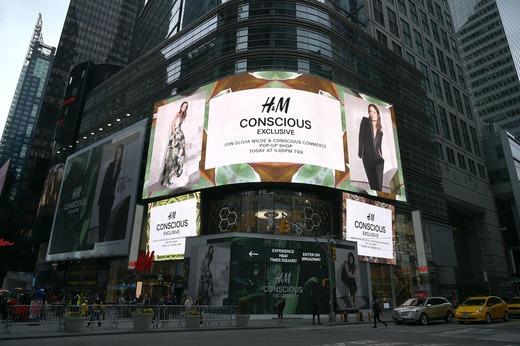

Americans spend over half a billion dollars a day on clothing. Imagine what the world would be like if just half of that amount was spent on only sustainable, ethical and eco-conscious brands. Conscious consumerism is based on the idea that every dollar is a vote. By leveraging our collective purchasing power, we can economically influence global companies to become more socially responsible. We can drastically change our planet simply by being more conscious of what we wear, how it is produced and what we do when we are done with it.
Conscious Commerce
Conscious Commerce is an experiment in living (and shopping) with a conscience. It is the brainchild of American actress Olivia Wilde and partner Barbara “Babs” Burchfield. “This is our attempt to be useful humans,” they explain in a welcome letter written on their website. “Maybe if we all take small steps in the right direction, we can at least avoid being the assholes ensuring total world annihilation.”The duo recently partnered with H&M to launch a Conscious Exclusive pop-up shop in Times Square. The actress-turned-humanitarian is also the face of the S/S Conscious Exclusive campaign, which celebrates the work of artisans all over the world. "The H&M Conscious Exclusive Collection doesn't compromise on style. It's a collection of pieces that I want to wear, and that are all made from sustainable materials. It's how fashion should always be," Wilde said.
In addition to the H&M Conscious Exclusive collection, the event featured sustainable and ethical fashion brands like, Amour Vert, Apolis, ClimateStore, Feed, Freedom of Animals, the Giving Keys, K/iller Collection, LSTN, Preserve, S'well, SHFT, Studio 189 and ZADY.
"Being in the H&M Conscious Exclusive Pop-Up, curated by Conscious Commerce, is an extremely exciting moment because we are launching the H&M Conscious Exclusive collection which is at the forefront of the sustainable movement in fashion," Wilde said. "... We thought why not pair the Conscious Exclusive Collection with brands that we at Conscious Commerce really love!”
“The partnership with H&M Conscious grew organically,” Wilde explained. “Ethical business has always been a passion of mine, and I love the idea of using retail to raise money and change the lives of people around the world.” Actress Rosario Dawson also presented her ethical jewelry line, Studio 189, at the pop-up event. “People will always want to buy beautiful things, but if you buy them with a conscience behind it, you can really make an impact.”
H&M Conscious
H&M is at the forefront of the sustainable fast-fashion movement. The company is on a mission to make sustainable fashion attractive, accessible and affordable to people all over the world. H&M Conscious is the platform which unites all of the company's efforts to promote a sustainable fashion future. It consists of seven conscious commitments and hundreds of actions in different areas of the supply chain.
H&M is the No. 1 user of certified organic cotton in the world. In 2014, nearly 22 percent of the cotton it used was either certified organic, recycled or grown under the Better Cotton Initiative. Its goal is to reach 100 percent by the year 2020. In addition to cotton, H&M is committed to using other sustainable materials such as organic linen, hemp and recycled wool, all grown with fewer chemicals and pesticides.
In 2014, nearly 90 percent of H&M products were transported by either ships or trains, and 27 percent of the energy used was renewable. This year, its goal is to use 100 percent renewable energy in all of its stores, offices and warehouses.
H&M’s ultimate sustainability goal is to close the fashion loop so that all old clothes can be turned into new clothes, instead of going to waste. Now, customers can drop off used clothing at any H&M store and they will be given a new life. In 2014, the company collected more than 7,600 tons of clothing, enough fabric to produce 38 million T-shirts. H&M also introduced the first pieces made of recycled cotton from clothes collected in its stores. Making recycled cotton requires zero water, fertilizers or chemicals and fewer carbon emissions than growing new cotton.
H&M Conscious is not just about the planet; it’s also about people. The company doesn’t own factories; instead it works with independent suppliers and sets the bar high as far as ethical standards go. It rewards companies that perform well with more business. It's transparent. Its suppliers list is public, and it also includes suppliers of its suppliers on this list. H&M also works for fair living wages across the entire textile industry. As a part of this action, its CEO personally met with the prime ministers of Bangladesh and Cambodia to promote higher minimum wages.
Fashion forward
“There is an undeniable movement toward mindful manufacturing, sourcing and spending in almost all areas of business, fashion being perhaps the most revolutionary," Wilde said in an article published in Vogue. Today’s consumers are demanding more transparency from the brands they love. The international Fashion Revolution movement, is a great example of this by urging customers to ask: “Who made my clothes?”
Conscious commerce is on a mission to make every retail purchase one that gives back. They want to put the “fun” back in fundraising. “Philanthropy is no longer about $10,000 a plate dinners, it is something that should be incorporated into every day life," Wilde said. "The young generation of today wants to participate, they want to live every day participating in the movement to make the world a better place. They want their clothes to have a story. It’s no longer cool to have a bag with a logo, they want a bag with a story. They want to know who made it and who it is benefitting.”
Fashion is our way of defining our individuality. Consumers want to shop consciously without sacrificing style or quality. There is a growing trend toward socially responsible brands producing quality, stylish and affordable sustainable fashion. “You shouldn’t have to compromise style in order to be sustainable,” Wilde said. Sustainable fashion can be fashionable.
Image credits: Getty Images
The Most and Least Eco-Friendly States of 2015


While many states are re-thinking smart growth, sustainability and planning, there are some that are faring better than others in their pursuit of being kinder to the planet and increasing overall environmental health across their respective cities.
As the celebration of Earth Month wraps ups, WalletHub's recently-released study citing America’s most and least eco-friendly states takes the temperature of how we're progressing toward a more environmentally healthy nation. Evaluated using 14 key metrics, states were analyzed in the study on the basis of their eco-friendly behaviors and overall initiatives to increase environmental quality.
The top and the bottom runners
With its excellent air quality, smaller population, above-average recycling rates and absence of air-polluting factories, it is no surprise that Vermont came in the lead as the top most eco-friendly state—an accolade the state has maintained across several studies in prior years.
Louisiana trails behind at the bottom, marked as one of the country's least eco-friendly states, characterized for its lack of investment in renewable energy sources, disproportionately high energy consumption rates and low municipal recycling rates.
From the experts:
"We spend so much time thinking about the "little" things we can do for the environment, like recycling a bottle, but so little time engaged as citizens in changing policies to promote sustainability. Local governments have quite a lot of discretion over land use planning in the US; I suggest that people attend city council meetings, find other citizens with common concerns, and make their voices heard," said Paul Steinberg, professor of political science and environmental policy, and Malcolm Lewis Chair of Sustainability and Society, at Harvey Mudd College.
The table below provides a visual ranking of where our states sit on the environmentally friendly spectrum.
| Most Eco-Friendly States | Least Eco-Friendly States | ||||
| 1 | Vermont | 41 | Wyoming | ||
| 2 | Oregon | 42 | Oklahoma | ||
| 3 | New York | 43 | Delaware | ||
| 4 | Minnesota | 44 | Arkansas | ||
| 5 | Massachusetts | 45 | West Virginia | ||
| 6 | Washington | 46 | Alabama | ||
| 7 | New Hampshire | 47 | Indiana | ||
| 8 | Rhode Island | 48 | Kentucky | ||
| 9 | Connecticut | 49 | Texas | ||
| 10 | Hawaii | 50 | Louisiana | ||
View the below table for a deeper analysis on how your state ranked.
Evaluation metrics of WalletHub’s study:
Measuring Environmental Quality - Total Weight: 5
Environmental Quality considers the current state of the environment in each area. The following metrics were used to evaluate this measurement:
- Carbon Dioxide Emissions per Capita (or “Carbon Footprints”): Full Weight
- Total Municipal Solid Waste per Capita: Full Weight
- Air Quality (Average Exposure of the General Public to Particulate Matter of 2.5 Microns or Less in Size [PM2.5]): Full Weight
- Water Quality: Full Weight
- Soil Quality (Median Soil pH): Full Weight
Eco-Friendly Behaviors evaluates the environmental impact of population habits. The following metrics were used to evaluate this measurement:
- Number of Green (LEED) Buildings per Capita: Full Weight
- Percentage of Energy Consumption from Renewable Sources: Full Weight
- Energy Consumption per Capita: Full Weight
- Energy Efficiency Scorecard: Full Weight
- Gasoline Consumption per Capita (in Gallons): Full Weight
- Water Consumption per Capita per Day (Domestic): Full Weight
- Number of Alternative Fueled Vehicles per Capita: Half Weight
- Green Transportation (Percentage of the Population that Walks, Bikes, Carpools, Takes Public Transportation or Works from Home): Full Weight
- Percentage of Municipal Solid Waste Recycled: Full Weight
Rankings were established based on data obtained from a plethora of government and nonprofit studies, including: the U.S. Census, the U.S. Environmental Protection Agency, the U.S. Energy Information Administration, the U.S. Department of Energy, the U.S. Geological Survey, the U.S. Green Building Council, the American Council for an Energy-Efficient Economy, the American Chemistry Council, the Environmental Working Group, the International Plant Nutrition Institute and the United Health Foundation.
For additional information and resources on this study, visit WalletHub.
The Shakespeare Effect: Good Storytelling for Great Jobs
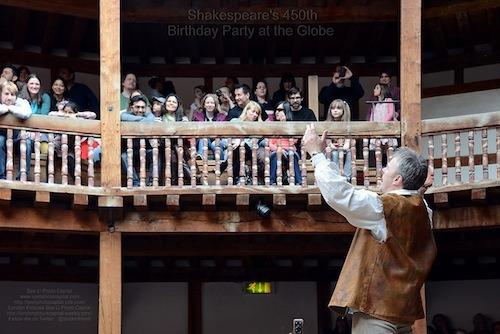

By Shannon Houde
Recruiters and hiring managers are suffering from information fatigue. Can you blame them? CVs, LinkedIn profiles, internal job application forms, bios, Twitter feeds and references ... It's crazy out there in the post-information age. There's just too much of it!
So, as a jobseeker trying to express your own competitive advantage in the crowded, noisy, unstructured sustainability jobs market, what do you do?
Simple: Don't dazzle hiring managers with facts and figures. Instead, entice them with a good story, just like sustainability practitioners have to do with their stakeholders. Narratives are what spark the imagination, weaving themes out of facts in a prose that's readable, relatable and -- most importantly -- memorable. Making it easy for a hiring manager to get a sense of your career story will set you apart from the hundreds of other candidates, which is is why being a great storyteller is so important if you're on the hunt for your next role.
The media seems to agree -- a recent article on Entrepreneur.com claimed that "storytelling seemed to be the major business lesson of 2014" while the Harvard Business Review waxed lyrical over "the irresistible power of classic storytelling." The New York Times summed it up, though: "You need to be compelling, unforgettable, funny and smart. Magnetic, even. You need to be able to answer the question that might be lingering in the minds of the people you’re trying to persuade: What makes you so special?"
There are a number of tools I use with career coaching clients to help them tell an authentic, effective career story that conveys real passion, relatable experiences and demonstrable skillsets. But before I let them loose, I make my jobseekers drill down on what I believe to be the three most important considerations in effectively marketing yourself:
- Know your audience. This is what makes you relevant to the employer -- it's about knowing what the market wants.
- Know your skills. This is what helps you be confident in what you are ‘selling’ -- it's about knowing what you're great at and being able to prove it.
- Know your passions. This is what sets you apart -- it's about knowing what issues you want to have and impact on and why.
Take a pen and a blank sheet of paper and write down the words that come to mind under each of these headings. Use colour, draw pictures, get creative and brainstorm! Once you've got your responses ready, it's time to start thinking about how you can string them all together into a coherent 'whole'.
Ask yourself, What's the common theme? What's the one narrative thread that will help you tie it all together? For me, the theme has been helping people to convert their passions into purpose and pay. I’ve had to work hard to define this common denominator - my previous roles include accountant, strategic planner, staffing assistant, eco-tour operator, entrepreneur, and finally career coach. But eventually I got there - I'm living proof that it can be done, no matter how diverse your career history!
This exercise is crucial in laying the groundwork for the personal branding tools that you'll put out into the jobs marketplace. The micro-bio you use on Twitter, the elevator pitch you save for conferences, the 4-line personal profile that sits on top of your CV, the smart-casual summary that graces your LinkedIn profile and the one-page job proposal you draft to impress a new client are all just extensions of this.
So there you have it. Bypass the information overload that's plaguing employers by crafting a compelling story out of your job history and becoming your own career Shakespeare. If you'd like some one-to-one support to help you weave the tale, try a 30-minute CV critique taster session with me to discuss your positioning, challenges and career in more detail.
Image credit: See Li, via Flickr
Shannon Houde is founder of Walk of Life Consulting, the first international career coaching business focused solely on the environmental, sustainability and corporate responsibility fields.
Tips to Keep Your Sensitive Organizational Assets Secure


By Sandra Lambert
It seems that every day, there is another story in the media regarding a data breach. Many companies think that their assets and data are secure, only to find at some point that they too have fallen victim to a hacker. Sometimes it is even just a simple case of an employee not properly securing their password or leaving their mobile device containing sensitive company data in a place where unauthorized individuals can gain access to it.
Ensuring the best security includes keeping employees properly trained and informed as well as having the proper security applications, protocols and equipment in place. The combination of these significantly reduces the risk of a data breach as well as keeping the workforce educated on how to keep their own data secure at home as well.
Here are important factors to consider and implement in order to ensure optimal security for your organizational assets.
1. Educate your workforce
Many employees in a company often have access to sensitive data. As such, it is more important than ever that your employees follow particular protocols to keep that data safe and secure. Institute a cybersecurity plan that educates and teaches employees how to ensure security of critical data, and also makes them aware of the various scams hackers may use in order to gain access to that data, such as phishing scams, ransomware and malicious websites.
Also teach them how to keep your system safe by downloading free malware protection software and by avoiding downloads in emails and on websites that they may not be certain of, and to keep Internet browsing restricted to websites only deemed necessary for business use.
2. Institute a security policy
In addition to training employees how to be aware of threats, they need to know what actions they may take that can lead to security breaches. For example, many business people today do work outside of the office, and may connect to public Wi-Fi spots in order to do so. This poses a risk, as tech-savvy hackers can hijack the signal and possibly gain access to the system and the data. You can find examples of rules to add to your security policy online, so that you can present a concise and complete policy to your employees.
3. Use a strong, reliable antivirus application
An antivirus application is an important line of defense against viruses, hackers and malware, and should be installed on your systems and kept up to date. The problem with many applications is that they need to be manually updated. Hackers are always producing newly developed viruses or methods for exploiting security holes in older applications, and a virus program that has not been updated may not be able to detect and prevent a new threat from breaching your system.
To keep your system safe from malware attacks and viruses, utilize a cloud-based antivirus application, as this type of application will update itself automatically as new updates are released. This ensures that the application is always ready to protect your system from newly developed threats.
4. Maintain and use the proper equipment
You may want to invest in stronger firewalls and equipment or software that encrypts your data. Your telecommuting applications and equipment also needs to be secure, and are potential problems for many companies that don't realize how easy it may be to gain access to your data through these systems.
--
Do you have a security policy in place in your own company? Were you affected by a data breach? Share your thoughts and experiences on social media, or offer your own input on how to improve cyber security in the workplace.
Image credit: Stock image
Sandra is a computer networking and security specialist. She is a CISCO certified professional having a flair and expertise in writing about varied topics related to the same. Sandra has written several actionable contents that are extremely handy in addressing cyber security-related concerns. Follow her on Google+ and Twitter.
GSK and Burberry sign up to Living Wage accreditation


Pharma giant GlaxoSmithKline and British fashion house Burberry have signed up to the LIving Wage pledge, bringing the number of FTSE 100 companies who have applied for accreditation with the LIving Wage Foundation to 23.
ShareAction, the responsible Investment charity, has been mobilising institutional investors in an Investor Collaborative for the Living Wage, from asset managers to pension funds to faith and charitable investors, to encourage the FTSE 100 to adopt the UK Living Wage standard since 2011 based upon the understanding of its long-term benefits to businesses.
ShareAction chief executive Catherine Howarth says: “We’re thrilled to see these major British companies adopt the UK Living Wage and proud of the role we played in co-ordinating shareholders to press for this result. We hope to see more FTSE 100 firms adopting the UK Living Wage and will continue to work with major shareholders to make that happen.”
Picture credit: © Peterguess | Dreamstime.com - Wallet Photo
Novartis named top company for diversity for second year


Novartis has been named the top company for diversity in the US in DiversityInc’s annual league table for the second year in a row. The American arm of the Swiss pharma giant also ranked second on the DiversityInc Top 10 Companies for Recruitment list and seventh on the Top 10 Companies for Employee Resource Groups list.
Christi Shaw, president, Novartis Pharmaceuticals Corporation and president, Novartis Corporation commented:“We believe that diversity and inclusion are directly linked to achieving our goals of creating solutions that help patients manage their diseases and live fuller, healthier lives. Encouraging diversity and inclusion helps us create a culture where people can be authentic and courageous, where collaboration can flourish, and where greater patient and customer understanding can drive future breakthroughs and innovations.”
According to DiversityInc, Top 50 companies have significantly more diversity than average American corporations. Compared with statistics from the US's Equal Employment Opportunity Commission , Top 50 companies have 20% more Blacks, Latinos, and Asians in management, and 13% more women. In the Top 10 the contrast is even sharper, with 41% more Blacks, Latinos, and Asians, and 46% more women than the US corporate average. This year, for the first time, the National Organization on Disability tracker was required for the Top 10 Disabilities list.
The overall top 10 this year are: Novartis Pharmaceuticals Corporation, Kaiser Permanente, PricewaterhouseCoopers, EY, Sodexo, MasterCard Worldwide, AT&T, Prudential Financial, Johnson and Johnson and Procter & Gamble.
To see the entire list, click here.
3p Weekend: 10 Companies That Are Rethinking Food Waste
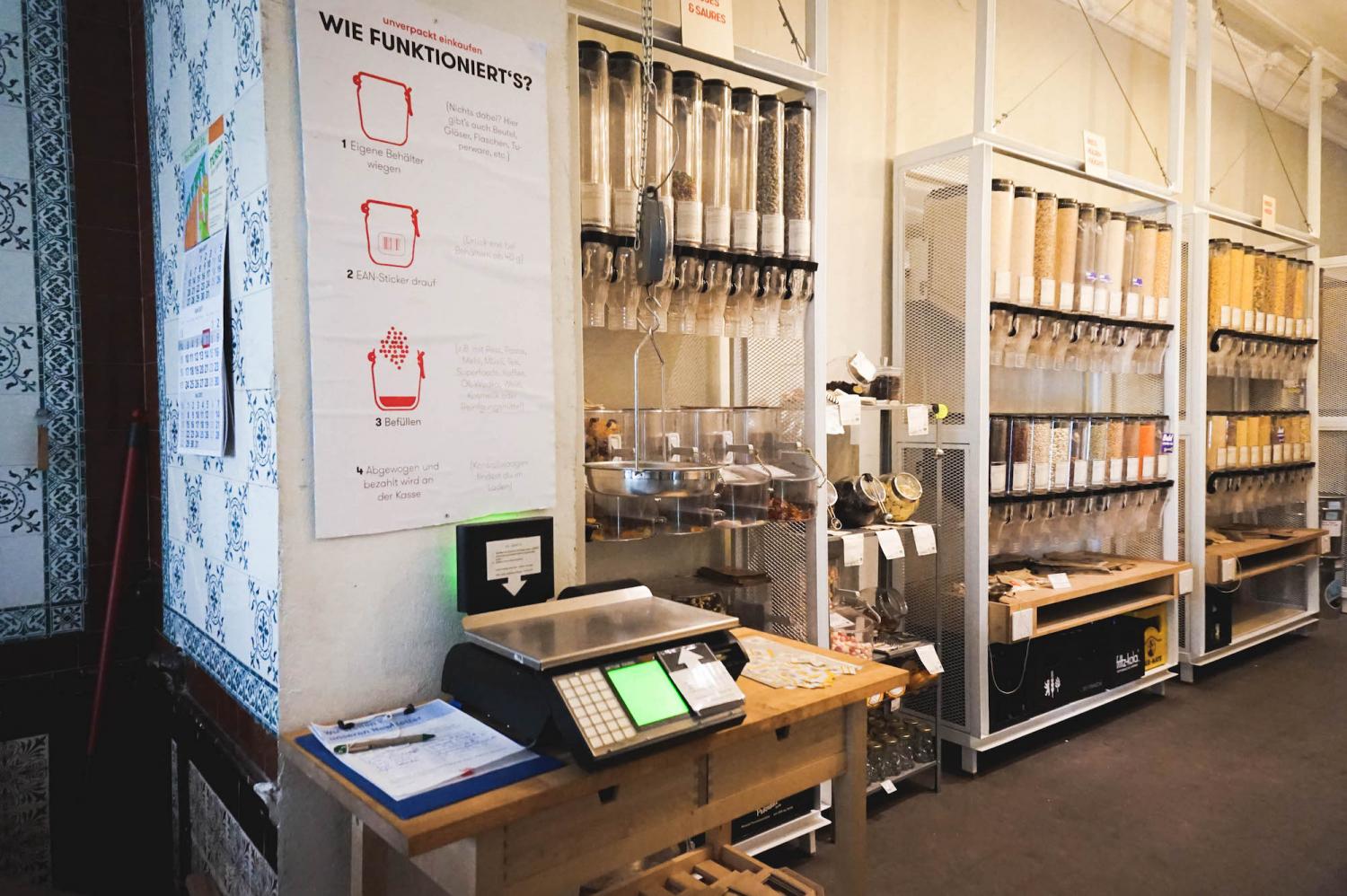

Image: German concept grocer Original Unverpackt sells everything in bulk, allowing shoppers to buy as much—or as little—as they need.
Food waste is a staggering global problem: Roughly a third of the food produced for human consumption every year — approximately 1.3 billion tons — is lost or wasted, according to the United Nations Environmental Program. Meanwhile, 805 million people around the world are estimated to be chronically undernourished. The juxtaposition is enough to put you off your lunch.
We have a long way to go before we fully address this problem, but a select few companies are taking innovative approaches to cut those figures down to size. From small startups to major multinationals, this week we tip our hats to 10 companies that are rethinking food waste.
1. Panera Bread
Like most cafes, Panera Bread serves fresh baked goods to its customers daily, meaning all unsold items need to be discarded at closing time. Rather than toss perfectly edible bagels, breads and desserts into the trash, Panera Bread sends these items to local nonprofits — as it has done since its inception.
Through the company's Day-End Dough-Nation program, Panera bakery-cafes donate approximately $100 million worth of unsold bread and baked goods every year.
2. Rude Food
Swedish caterer Rude Food is all about rethinking food waste: The all-volunteer, mostly vegan catering service cooks up accessible and easy-to-replicate meals made almost entirely from food waste. Around 95 percent of everything that Rude Food makes comes from "expired" items, blemished produce, or leftovers from salad bars and the like, Fast Company reported this week.
3. Original Unverpackt
Original Unverpackt (pictured above), a concept store in Berlin, is basically the grocery store of the future. Shoppers purchase everything in bulk using reusable containers, eliminating the need for packaging. And despite the term "bulk buying," customers can purchase as much or as little as they need, which can drastically cut down on food waste at home.
4. Darden Restaurants
Darden Restaurants, the Fortune 500 giant known for brands like Olive Garden, LongHorn Steakhouse and Bahama Breeze, began its Darden Harvest food rescue program more than 10 years ago. Through the program, restaurant employees box up food that has passed internal sell-by dates — but is still perfectly fit for consumption — and sends it to local hunger relief organizations.
With full participation from all Darden restaurants, the program has donated more than 77 million pounds of surplus food to hungry families since its inception, totaling more than 100 million meals.
5. Sainsbury's
Donating unsold food to hunger relief organizations can dramatically cut down on the organic waste grocers send to landfills, but what about spoiled or damaged food that can't be donated? Sainsbury's, the second largest grocery store chain in the U.K., collects inedible food waste from 1,200 locations and turns into energy to power its stores.
The chain announced that its Cannock, England, store will be directly powered by tossed food waste, with more waste-powered stores expected in the future. "It was the right thing to do, but also it was the right commercial thing to do," Paul Crewe, head of sustainability at Sainsbury's, told Fast Company. "Putting food waste into landfill costs £150 per ton, and the alternative of [turning it into energy] is significantly cheaper. It's putting that waste to true, positive use."
The progressive grocery chain also green-lighted the sale of "ugly" produce back in 2012 and teamed up with Google to help consumers rethink their leftovers.
6. Loblaw
One reason why food waste in the United States, Canada and the United Kingdom hovers around 40 percent is that shoppers tend to turn up their noses at produce that isn't a uniform shape or color. This first-world problem leads grocers and their suppliers to discard misshapen or “ugly” produce before it ever hits store shelves.
But Canadian grocer Loblaw is bucking the trend: Instead of throwing these fruits and veggies away, the grocer will soon sell them at a discount at some of its outlets in Ontario and Quebec, Loblaw announced last month.
7. AgriDust
3-D printing is pretty awesome, but what's not so awesome is that most 3-D printed items — from large manufacturing parts to household trinkets — are made from plastics that are difficult to recycle.
Enter AgriDust: a concept that turns 3-D printing on its head. The brainchild of Italian designer Marina Ceccolini, AgriDust is a 100 percent organic 3-D printer feedstock. Around 65 percent of the material is made from common food waste items like coffee grounds, peanut shells, tomato husks and citrus peels. The remaining 35 percent is a binder made from potato starch.
The material can be used to replace plastic in certain short-lived products, like packaging or plant pots, and could also be used to print out samples before making a final product, Fast Company reported. "These technologies are mainly used to create the first prototypes and objects that serve only for a first phase of the study," Ceccolini told Fast Company. "I don't want to eliminate the use of plastic, because in some sectors that is unthinkable, but in the case of disposable products, you might start to think and act differently."
8. Zero Percent
Rajesh Karmani first took notice of America's food waste problem while attending the University of Illinois. And after graduation, he decided to do something about it.
Using his computer science background, Karmani set out to create a convenient, safe and efficient online food-donation marketplace to help restaurants move surplus food to nearby soup kitchens and shelters. Founded in Chicago last year, his startup Zero Percent has already donated 537,000 meals to more than 200 nonprofits -- converting what was once considered trash into wholesome nutrition for neighbors in need.
"We want to grow this from where we are now at 1,500 pounds per day to 15,000," Karmani told Starting Up a Startup. "This is a hard problem because there are so many variables involved such as time, location, and size of delivery. The real challenge is meeting those at the supplier side and the need side."
9. Kroger
Like most grocery chains, Kroger produces a staggering amount of food waste -- around 150 tons daily. But rather than shell out disposal fees while flooding local landfills, Kroger’s food divisions, Ralphs and Food 4 Less, opted for a more innovative solution.
The grocers installed an anaerobic digestion system at their distribution center in Compton, California: It takes in the food and puts out biogas, providing power for the campus where the center is located. “Anything that can’t be sold or donated comes into the system,” Kendra Doyel, a spokesperson for Ralphs and Food 4 Less, told GreenBiz.
10. Intermarché
French grocery chain Intermarché has also made big bucks by selling "ugly" produce. Last year, the company launched a commercial and print ad series called Inglorious Fruits and Vegetables, featuring stars like "the grotesque apple," "the ridiculous potato" and "the ugly carrot," to encourage shoppers to see the beauty in funny-looking fruits.
The campaign was quite successful: Marcel, the creative agency behind Intermarche's campaign, told NPR News that overall store traffic rose 24 percent.
Image credit: Original Unverpackt
Rana Plaza Two Years Later: Fast Fashion, Fast Destruction
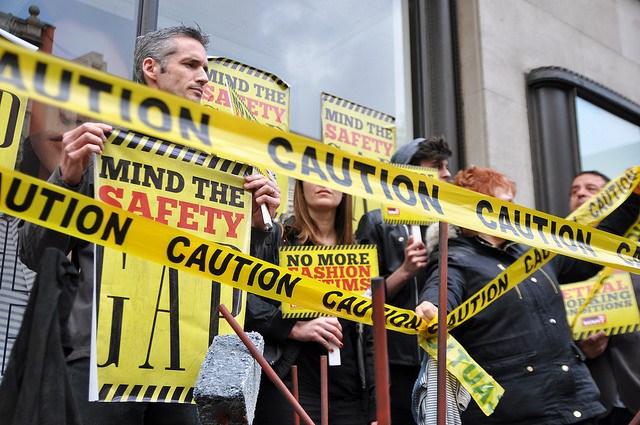

By Antoine Didienne
On April 24, 2013, the Rana Plaza factory building collapsed in the city of Dhaka, Bangladesh. The building was unsound, and the safety of all its occupants was put at risk daily. But since the owners of the factory had quotas to fulfill, the telltale signs were ignored. That day at 8:57 a.m. local time, 1,134 people died and over 2,500 were injured in the name of fast fashion.
In America, the average consumer buys over 68 items of clothing per person per year. That’s more than one item every week! We often buy clothes that just sit in our closets with the tags still on. We shop and we don’t realize that the clothes we buy have consequences to the environment, economy and human lives.
The fashion industry has been very successful at making us forget that human beings, not machines, have sewn the clothes we wear. Fashion is a trillion-dollar industry (the second largest in the U.S.), employing approximately 23.6 million people. It is the second largest polluter in the world (after the oil industry) and is one of the largest abusers of human rights. From cotton fields to sweatshops, the fast fashion industry leaves a trail of destruction in its wake.
We forget that these people, most of whom are young women, work 12 to 15 hours per day, six to seven days each week, in conditions that we would be appalled by. The reason for these conditions is that saving money on basic human safety makes it a few cents cheaper to produce our clothes. The tens of thousands of people who work in the garment industry in Bangladesh often make as little as 25 cents per hour.
Now, two years later, has anything changed? Are things better or worse?
Let’s start with the “worse": Our friends at American Apparel and their “made in Bangladesh” ad. Although I applaud the company for taking a stand on making its clothes downtown Los Angeles, its “made in Bangladesh” ad is not fashion, it is exploitation.
Onto the “better” outcomes. The most important thing is that the families of the victims of Rana Plaza have received some compensation for their loss. The Bangladeshi government created what is commonly referred to as "the arrangement.” It is a trust fund (also called the Rana Plaza Donors Trust Fund) dedicated to the victims and their families that is managed by the International Labor Organization, a U.N. entity. So far, over $12 million has been donated and distributed directly to the families through mobile banking.
Also, many of the apparel brands that contracted with Rana Plaza, as well as many not associated with the disaster, have signed a fire and safety agreement to prevent hiring subcontractors with less-than-adequate facilities.
Change is hard. I have bought, and sometimes still buy, clothes that have been made with questionable ethics. Fast fashion is prolific because clothes are inexpensive and readily available. However, it is my dream to be part of changing the face and pace of the fashion industry. I want to be a disruptor of the system as it is. That’s why my company, Vavavida, is based on what we call full-circle economics: a sustainable system of retailing jewelry made ethically (i.e. fair trade) and giving back to the countries where we source our products.
We designed our company to be a chang- maker, and there are many others just like us. Just check out the Ethical Fashion Source Network for a list of (mostly U.K.-based) fashion designers with a conscience. Also, there are people like model Lily Cole doing good things to change fashion. I will also give props to H&M, which is actively trying to clean up its act.
So, please just consider what your options are when you buy clothes. Start by looking at the tag before buying and understanding that your purchasing decisions do have an impact. Those 68 pieces of clothing you buy this year can either help or hurt. We make a choice every time we spend our money on whether we want to support ethical fashion or the destructive cycle of fast fashion. Make a stand with your wallet, and wear clothes that represent sustainable fashion.
Image credit: Flickr/Darren Johnson
Antoine Didienne is a social entrepreneur and the founder of Vavavida, an online retailer of ethical boho-chic fashion accessories.
Report Charts Rise in Global EV Market, But U.S. Shows Troublesome Signs
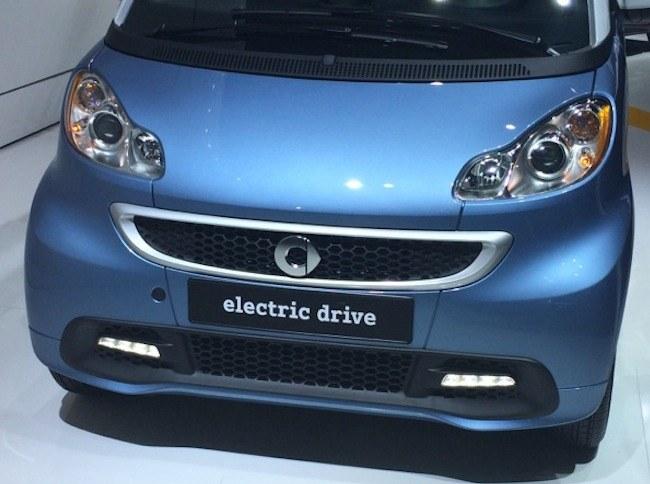

The research firm Frost & Sullivan is out with a new electric vehicle market report that demonstrates "huge progress" in the global market in recent years, and it adds an interesting twist: EV buyers are beginning to shift in favor of plug-in hybrids, which run on both gas and electricity to provide for longer range.
That's great news for EV manufacturers like General Motors, which has banked a lot of bucks on the gas-electric hybrid Chevy Volt. However, the growing preference for long-range EVs also underscores a somewhat disturbing trend occurring in the U.S.
EV market report looking good ...
The new report, Strategic Outlook of Global Electric Vehicle Market in 2015, covers pretty much every kind of EV you can think of, including the aforementioned plug-in hybrid types (PHEVs for short).
Frost & Sullivan provides a handy summary in its press materials. And for those of you on the go, we'll boil it down to a few relevant details.
The report puts total EV sales at 304,683 in 2014, and estimates that number will reach 466,407 this year. Of particular interest is North America, which the report predicts will continue to lead at a 36 percent share.
The other two of the top three markets are Europe (27 percent) and China (24 percent).
... But sales lag behind expectations
While the global market is growing, the new EV market report spots trouble:
"Although the EV market is growing in all regions, overall sales have not met the expectations of automakers. Automakers in Europe and North America have not managed to achieve sales targets mainly due to end users' reluctance to adopt new technologies, the long charging time for vehicles, and the lack of awareness on the benefits of EVs," the report's authors wrote.
In the U.S, sales have reached 162,000 for EVs and PHEVs combined. That's up 30 percent since 2013, but it's a far cry from the goal of 1 million by 2015.
The auto research firm Edmunds has taken note of the lag between aspiration and actuality in the U.S. electric vehicle market, and earlier this week it released findings that confirm the Frost & Sullivan report:
"Car buyers are trading in hybrid and electric cars for SUVs at a higher rate than ever before ... today's gas prices are drawing hybrid and EV owners toward gas-guzzling vehicles at a much more accelerated pace than in recent years," Edmunds reported.
Despite huge advances in EV battery range, the combination of an economic upswing with low gas prices is still like catnip to mainstream auto buyers. Edumunds puts a figure of 22 percent on the rate at which PHEV and EV owners have been trading in their vehicles for new gas-guzzling SUVs.
According to Edmunds, total EV sales in the U.S. are sliding in tandem with the SUV trend:
"EVs and hybrids accounted for just 2.7 percent of all new car sales in the first quarter of 2015, down from 3.3 percent during that same period last year. The share of SUVs, meanwhile, has increased from 31.8 percent in Q1 2014 to 34.2 percent in Q1 2015."
How to get EV sales back on track
Put it all together, and you've got bad news for today's EV market.
That's also bad news for companies that are looking to burnish their green cred by investing in EV fleet vehicles -- and encouraging their employees to purchase EVs.
However, when you look at the big picture, the current trend seems more like a temporary glitch than the shape of things to come.
As far as range and costs go, new improvements in battery technology are already resulting in longer range and lower costs, and more advances are gradually working their way out of the laboratory. Gasoline prices will inevitably go on the uptick again, and when they do, EVs will be poised for a takeover.
Frost & Sullivan notes that expansion of public EV charging networks will add a strong element of convenience to the appeal of EVs. Also helping to give EVs a future edge on convenience is the fact that the gasoline retail market has been shifting into a model that involves larger, but far fewer, gas stations. Add home and workplace EV charging to the mix, and it's clear that fueling convenience will be a major factor in favor of future EV sales.
Hunger for big SUVs in the U.S. market and elsewhere translates into bigger batteries, and bigger costs, so you could be on safe ground assuming that the appeal of gasoline-powered SUVs will be rather clingy. However, some auto manufacturers -- notably Hyundai -- are beginning to address the SUV end of the market with EVs that run on fuel cells.
Though fuel cell technology is pricey now, fuel cells pack more power than conventional batteries, and they can propel larger vehicles over greater range. Just as the cost of EV batteries has been dropping, it's possible that fuel cell technology could achieve a cost-effective niche in the EV market of the future.
More to the point: In a classic case of good timing, the U.S. National Research council has just come out with a new report on how to overcome the barriers to EV adoption.
Sponsored by the Energy Department and required by a mandate from the U.S. Congress, the new EV report is aptly titled Overcoming Barriers to the Deployment of Plug-In Electric Vehicles. It identifies cost, battery technology and consumer education as three areas for improvement.
The report recommends a focus on expanding the EV charging network by streamlining local regulations, in order to speed up the permitting process for installing chargers at homes and workplaces.
Another recommendation is aimed at standardizing charging plugs and establishing a universal payment system for all charging systems. That won't elicit grins from our friends over at Tesla, which has been rapidly expanding its network of proprietary stations, but we're thinking that it's absolutely necessary for the EV market to grow. After all, when was the last time you pulled your gas-mobile into a gas station and couldn't get the pump nozzle to fit into your tank?
The report also eyeballs lowering the cost of EV charging by incentivizing off-peak use of charging stations.
Given the public benefit advantages of EVs in terms of greenhouse gas emissions, as well as local noise and air quality issues, the report makes the case for continuing government incentives for EV buyers in the form of tax credits and rebates, among others.
Image credit: Tina Casey